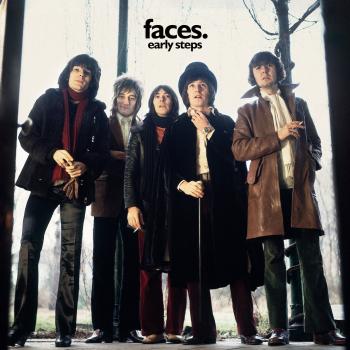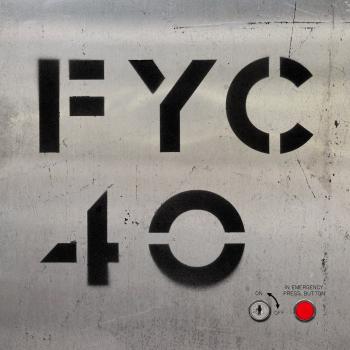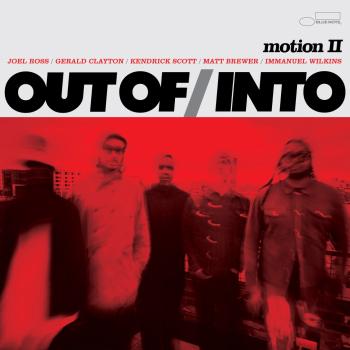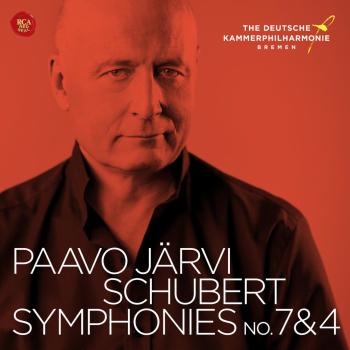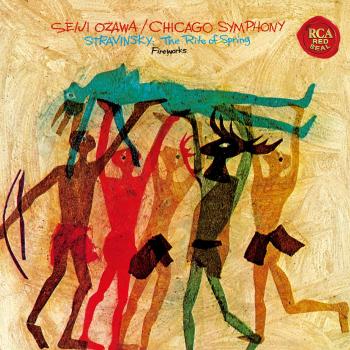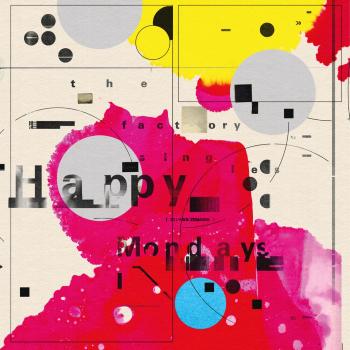
Bridges Adam Baldych & Helge Lien Trio
Album info
Album-Release:
2015
HRA-Release:
27.08.2015
Album including Album cover Booklet (PDF)
- 1 Bridges 03:28
- 2 Polesie 04:52
- 3 Mosaic 07:26
- 4 Riese 05:57
- 5 Dreamer 04:31
- 6 Requiem 03:40
- 7 Karina 05:14
- 8 Missing You 05:06
- 9 Up 04:25
- 10 Lovers 05:34
- 11 Teardrop 04:18
Info for Bridges
The virtuosity of Polish violinist Adam Baldych enables him to pass with astonishing ease through all kinds of borders: the boundaries of his instrument, the barriers between genres, the seams between composing and improvising.
The virtuosity of Polish violinist Adam Baldych enables him to pass with astonishing ease through all kinds of borders: the boundaries of his instrument, the barriers between genres, the seams between composing and improvising. These dividing lines fall away as his playing coalesces with that of his fellow musicians. These attributes have led the UK magazine Jazzwise to call him “a refreshingly different European jazz star”. As a player who is “a virtuoso and capable of delivering high emotion” (Fono Forum) with his 'dervish-like intensity' (Jazz thing), he uses the tradition as the point of departure for new and exploratory journeys up and away beyond jazz.
Baldych was born in 1986. His talent was spotted early, and earned him the designation of 'Wunderkind'. After an extended stay in the US, where he pursued studies at the renowned Berklee College in Boston, and then in New York, it did not take long for his international breakthrough to occur. Following a highly acclaimed appearance at the Berlin Jazz Festival in 2011, the German newspaper FAZ declared him to have “doubtless the greatest violin technique in jazz among players alive today.” His debut on the ACT Label in his own name, “Imaginary Room” earned him an ECHO Jazz Award. The follow-up on ACT was “The New Tradition”, a duo with the pianist Yaron Herman. That CD was assessed by the Süddeutsche Zeitung as follows: “people who want to know where the next Debussy, the next Grieg or Stravinsky is coming from would do far better to look around in jazz than in contemporary classical music.'
That evaluation rings equally true for Adam Baldych's new album “Bridges,” where the opening of the first track is enough to demonstrate it clearly. A soft, lyrical melody becomes enriched with tonal colour. At the same time, the listener becomes aware of harmonic voicings that recall not just Slavic but also Scandinavian sounds. That is because, alongside Baldych's own astonishingly varied range of string sonorities – from gossamer harmonics to a fully weighted tone similar to that of a cello – there is the sound of a pianist capable of a similar degree of variation. On “Bridges” Baldych has the Norwegian pianist Helge Lien and his trio by his side. “I listened to his last two albums with great interest,” explains Baldych. “The producer Siggi Loch had given me one of them to start with, and I was impressed by the way this trio makes music together. I had been looking for a piano trio that would play my own compositions in a particular way, that is to say they would make the two musical personalities, mine and the pianist's, coalesce, to make something new from my music.”
Helge Lien proved to be the ideal choice for this. His style has undergone continual development over the course of no fewer than eight albums with the trio. That evolution gives Lien the capacity to place his trust implicitly in bassist Frode Berg, who has been a fellow traveller from the start. Drummer Per Oddar Johansen, who joined a couple of years ago, is very different: his tendency is to liven things up. This trio's way is to create melodic shapes which are accessible and perfectly formed, yet never trite. The group's leanings towards the trio tradition from Esbjörn Svensson up to Brad Mehldau are evident, and yet the way they experiment both with the American heritage and Nordic sound-atmospherics is not just their own, it also reaches back into the lineage of the European late romantic classical music, to Debussy, or even to Chopin.
These are all antecedents, which the trio have in common with Adam Baldych, who like Lien is a lyrical musician with a strong focus on melody, and who also loves rhythmic and dynamic development. Another significant facet of Baldych's music is the way folk influences enter as such a strong element in his music. An example that illustrates this point well is “Polesie.” The title is a clever conflation in of the words 'Polish' and 'Poesie' (poetry), while the music draws on the Eastern Polish folk tradition to which Baldych was exposed via his grandparents. Over and above this, however, the four musicians have all found themselves totally at one with the overall theme that Baldych has given to this album: silence. 'With the world around all of us getting ever louder,' says Baldych, many people are finding that they become afraid of silence. They think they have to keep on talking just to feel good. Yet the acquisition of knowledge requires silence, and there are many things that can only ever be expressed in a whisper. In my experience, silence can be curative, so I have sought out sounds that emanate from whispering.'
As each of the eleven pieces on this album emerges from silence - and almost always returns to it - they cast an almost hypnotic spell. That is what happens in the '100% improvisation' of the title track, in the wildly dynamic 'Mosaic, in 'Baldych's poignant 'Requiem' for departed friends and role models, in 'Missing You,' which despite its title is an upbeat swinger, and in “Up,” in which experimental sounds are to the fore, and which takes off several times in surprising directions.
Adam Baldych, violin
Helge Lien, piano
Frode Berg, bass
Per Oddvar Johansen, drums
Adam Baldych
"Without any doubt the greatest living jazz violinist. One can expect everything from him." Ulrich Olshausen from German newspaper „Frankfurter Allgemeinen Zeitung“ about Adam Bałdych’s concert at Jazzfest Berlin 2011. Bałdych was born in Gorzów Wlkp in Poland in 1986.
His outstanding talent was detected early. He was celebrated a prodigy in Poland. “By the age of 9 I decided to visit a school of music” he remembers. He already was well aware of his home country’s music tradition. “Poland has a great music tradition, especially referring to piano music and since Henryk Wieniawski also referring to violin playing.” Only by the age of 11 he decided to start playing the violin with great role models in mind: “I was very much influenced by the famous East-European composers, such as Rachmaninoff, Chopin and Tschaikowski.“ A number of awards for young musicians in classical music proof his talent: In 1999 he became third in Polish national violinist competition in Poznan. The same year he was awarded the first price at regional violinist competition in Szczecin and at Baroque music competition in Gorzow.
By the age of 13 he finally decided to play Jazz. “Jazz offered me the musical freedom, I was searching for.” A noteworthy series of awards followed: In 2002 he won the „Jazz Celebration“ competition in Gorzów. Since 2001 he was annually awarded the „Key for Career Award“ by renowned Polish magazine “Jazz Forum”.
By the age of 16 his international career began. He toured through Europe and Asia. After finishing his jazz degree with merit at Kattowitz conservatory, he got a scholarship at the Berklee College of Music in Boston. Ever since, New York is the place of departure for his musical journey through the world. In recent years he was touring with Grammy-award-winning pianist Jim Beard, other famous violinists like Didier Lockwood, Pierre Blanchard, Jerry Goodman, Krzesimir Debski or Christian Howes and he participated in Jaroslaw Smietana’s project „Tribute to Seifert“. He himself recorded several noteworthy albums in different collaborations –with Singer Mika Urbaniak or the „Groove Razors“. On his album “Magical Theatre“ he also dealt with author Herman Hesse’s famous novel “Der Steppenwolf”. He first gained international attention with his band “Damage Control”.
Besides his regular work for international theatre- and film productions, and even though he partly lives in the US, Bałdych always stays in touch with Polish musicians. It therefore is no wonder that Polish piano star and ACT-artist Leszek Możdżer got to know Bałdych in 2008. Together they wrote the soundtrack to the movie “Sir Arnes Schatz” by Swedish director Mauritz Stiller. Możdżer hereupon introduced Bałdych to ACT head Siggi Loch. Loch did not hesitate to ask Bałdych to join the ACT family.
Together with Loch and Nils Landgren as the producers and a first-class studio band, Bałdych started to record his ACT debut “Imaginary Room” (ACT 9532-2) in March 2012 at Hansa Studios in Berlin. Lars Danielsson, one of the leading bass players in contemporary jazz, drummer Morten Lund and Swedish pianist Jacob Karlzon form the rhythm section. Two of the greatest talents in Scandinavian jazz –trumpet player Verneri Pohjola and Norwegian saxophonist Marius Neset make up the brass section.
Helge Lien
jazz pianist and composer, holds a master degree in music from the Norwegian Academy of Music, where Russian pianist Misha Alperin was an inspiring mentor and teacher of improvisation.
The core of Lien’s work has since 1999 centered on the Helge Lien Trio, consisting of the classical jazz constellation piano, bass and drums. In 2008 the trio won the Norwegian Grammy for their album Hello Troll, and has achieved international acclaim following tours in Japan, Germany and Canada, among other places.
With Tri O’Trang (1998–2006), consisting of piano, saxophone and tuba, Lien has cultivated a more structural music with strong melodic as well as abstract features, in which composed and improvised elements are interwoven.
The duo HERO (2005–6), with saxophonist Rolf-Erik Nystrøm, focused on “contemporary music,” emphasizing atonal and arhythmic elements and extensive experimentation with timbre. During this period, the two musicians participated in folksong artist Jørn Simen Øverli’s project Prøysenvisene som forsvant (The Prøysen songs that disappeared).
Helge Lien has shown himself to be a musician who is not afraid to explore the borders between different musical genres, but whose basic sound as a jazz pianist is always a distinctive feature. Originally influenced by Bill Evans’ lyric-dynamic style of playing, he also shows affinity with Keith Jarrett’s narrative inventiveness and the subtle strophic expression of Brad Mehldau. Lien is a technically brilliant player, with a solid and rich sound. His resourcefulness and briskly responsive playing comes in extremely handy as a “composer of the moment” in all of his work.
Helge Lien Trio
Having built up loyal audiences, perhaps most notably in Germany and Japan, the Helge Lien Trio bring with them their finely poised tunes that balance impressive virtuosity with inherent accessibility, and introspective lyricism with buoyant expressionism to their concerts around the world.
Helge Lien, has developed his very own unmistakable style of trio playing. With instinctive sureness, he and his musicians have developed their own take on chamber jazz that stands out through its harmonically complex tone colors. Building on Bill Evans’ lyrical power and the exhilaratingly melancholic playing of Esbjörn Svensson, Lien, in constant dialogue with Frode Berg (bass) & Per Oddvar Johansen (drums), creates distinct moods in recorded and live settings alike.
Doubtlessly, pianist Helge Lien, who is very skilled at playing to the gallery with his modal piano art, is one of the most exciting young talents in Scandinavia. Playing their way into the hearts of a steadily growing circle of listeners with classic-impressionistic patterns and rhythmical-melodic jazz, this trio’s resourcefulness seems to truly know no bounds.
Booklet for Bridges



